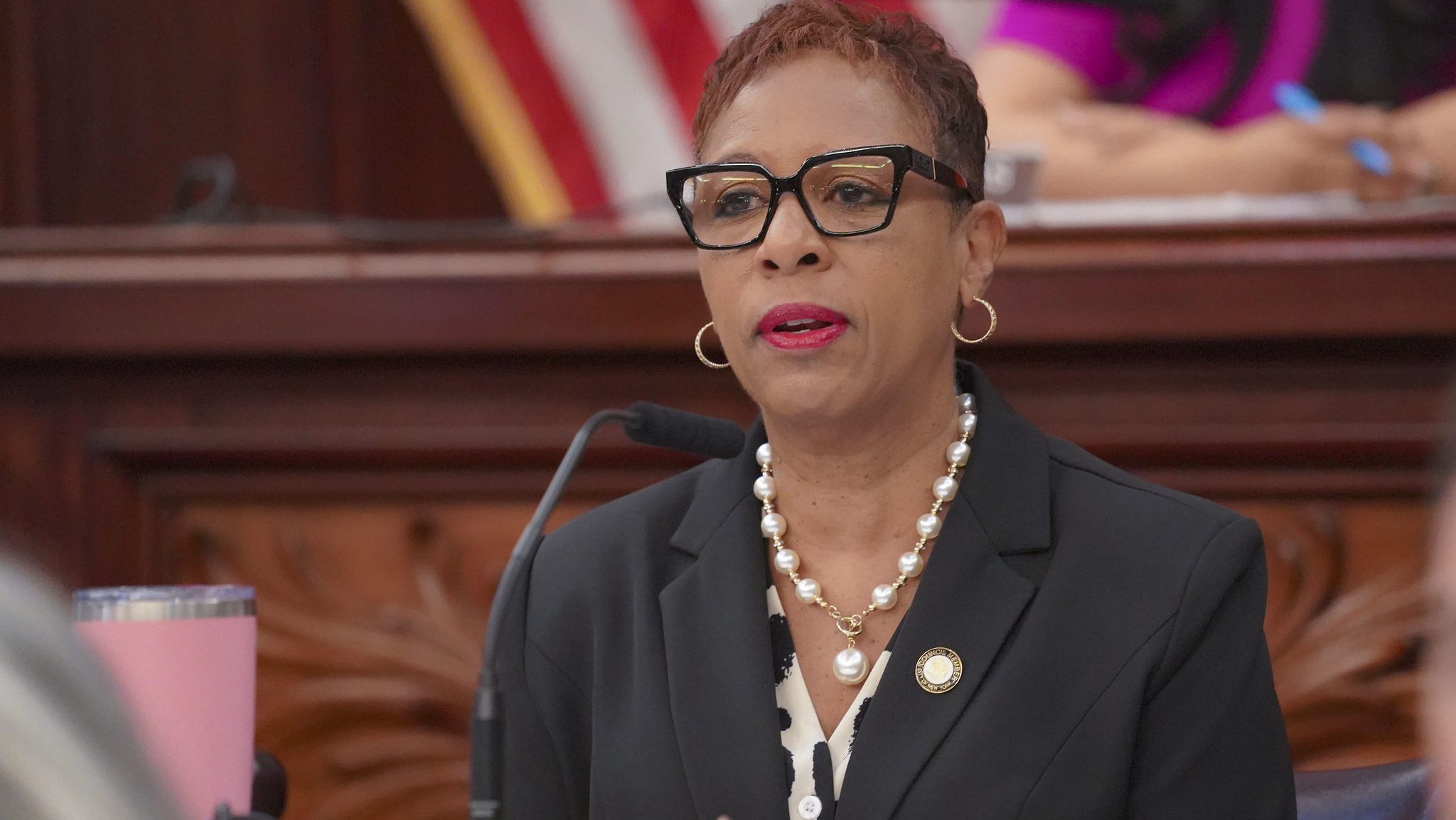
See the world's first music video about shared-lane bike markings by Streetfilms Clarence Eckerson.
At times over the last two and a half years I have done quite a bit of organizing and advocacy work to help get new bicycle lanes and shared-lane markings installed on Fifth Avenue in Brooklyn, my neighborhood's main bike route. Though I was the community person leading the initiative and was often in close contact with the Department of Transportation staffers responsible for the project, I still found myself surprised when the bicycle stencils went down on the street a couple of weekends ago. The markings were different than what I had expected.
The main goal of the shared-lane markings, as I understood them based on my conversations with DOT, are to help motorists and cyclists know that bikes have a right to ride in the travel lane along the narrower stretch of the Avenue. As such, I expected that the stencils would be painted smack in the middle of the travel lane, similar to Berkeley, California's Bike Boulevard markings. Instead, the Fifth Avenue stencils, modeled after San Francisco's "Sharrows," were placed along one side of the travel lane, just outside the range of parked cars' doors.
 Sharrows have been studied and tested and are supposed to provide real benefits to cyclists. Yet, to my eye, stencils along one side of the travel lane don't send the message that bikes have a right to the middle of the road. Rather, they seem to send the message that cyclists should be riding in the margins, squeezing between parked cars and moving traffic. I imagine a number of motorists will read them the same way and feel justified in blasting their horns at cyclists riding in front of them. This, I thought, was contrary to DOT and the community's goal for the shared-lane markings.
Sharrows have been studied and tested and are supposed to provide real benefits to cyclists. Yet, to my eye, stencils along one side of the travel lane don't send the message that bikes have a right to the middle of the road. Rather, they seem to send the message that cyclists should be riding in the margins, squeezing between parked cars and moving traffic. I imagine a number of motorists will read them the same way and feel justified in blasting their horns at cyclists riding in front of them. This, I thought, was contrary to DOT and the community's goal for the shared-lane markings.
I don't bring this up to complain about the new markings or bash DOT. Overall, I think the stencils are a step forward and, though there was friction at times, I think the collaboration with DOT was constructive. I probably should have asked to see the design before the stencils went down. I bring up this issue to highlight the broader question of community involvement in designing and building New York City's growing bicycle network.
As thoughtful, involved (and occasionally cranky) cyclists debate bike lane design here on Streetsblog and as New York City's Department of Transportation embarks on its effort to produce 200+ miles of new bike lanes over the next three years, one of the big, outstanding questions is, simply: What is the most constructive way for cycling advocates and city government to work together and interact? How can we best put our heads together and use our resources to make New York a better biking city?
In trying to answer this question, it is worth taking another look at London' England's new Cycling Design Standards.

Transportation Alternatives' Deputy Advocacy Director Noah Budnick points me to Chapter 2, page 26 (PDF file), which describes CRISP -- the "Cycle Route Implementation and Stakeholder Plan." CRISP outlines a detailed process for how city government should collaborate with key stakeholders and community members in the creation of new bicycle infrastructure. Rather than approach every new bike lane as an ad hoc project, CRISP helps "streamline bike lane implementation from both a design and political standpoint," Budnick says. CRISP -- in theory -- helps city government, bicycling advocates and community groups understand each other and work together (I still need to talk to someone about how it works in practice).
New York City cyclists are a demanding, knowledgable and active constituency. They are, inevitably, going to have problems with 200+ miles of new bike lanes designed and built without their input. DOT, meanwhile, is surely going to need political help from cycling advocates as new bike lanes take street space away from motorists and are striped through neighborhoods that don't want them. As in London, New York City needs to have a process in place to help cycling advocates, community groups and city government to work together constructively.





